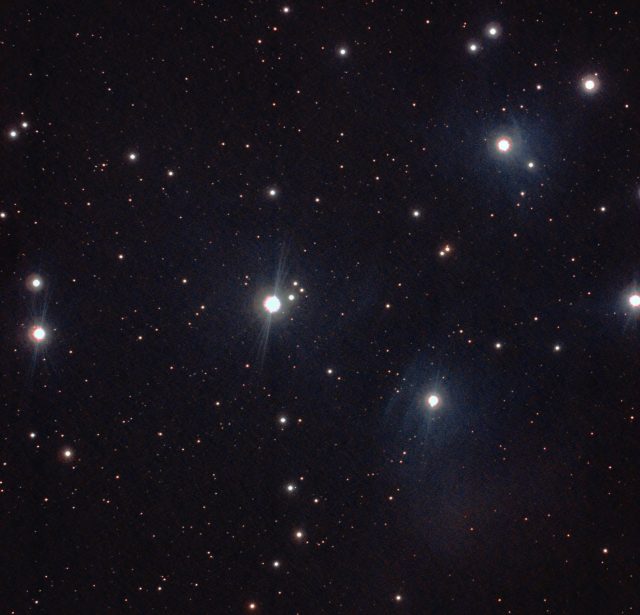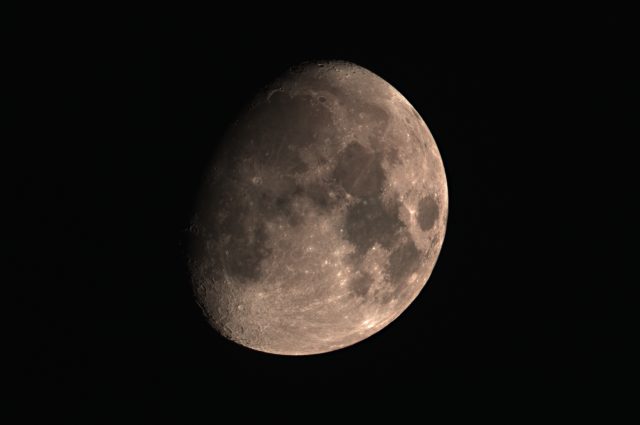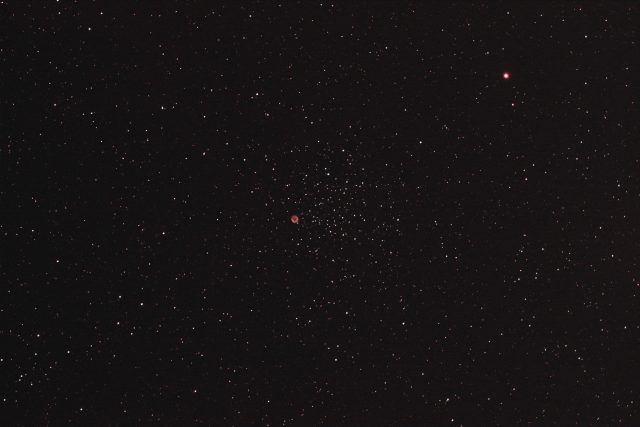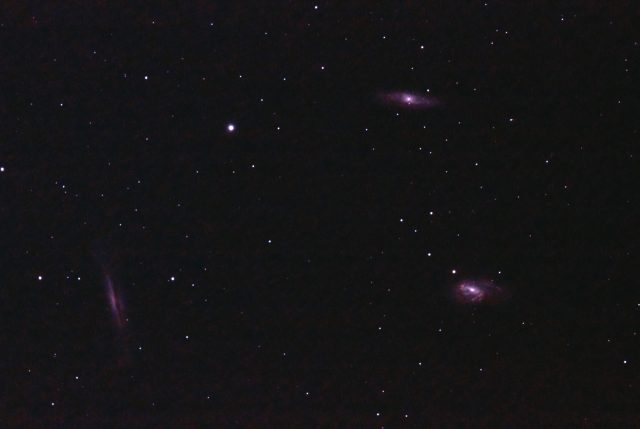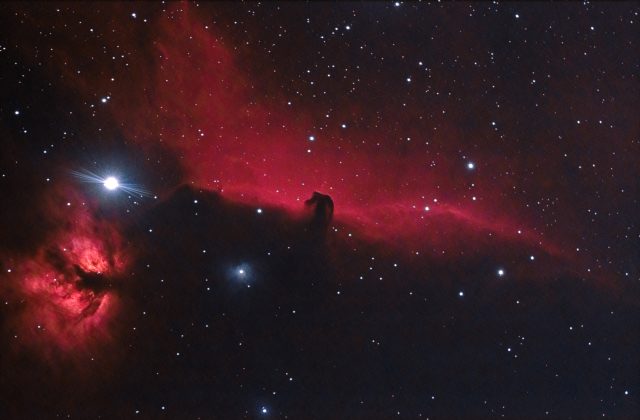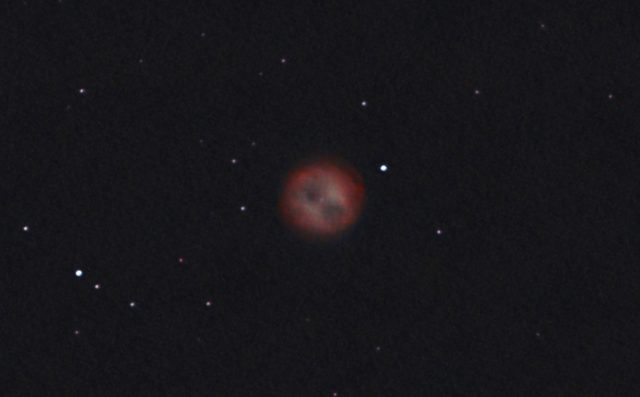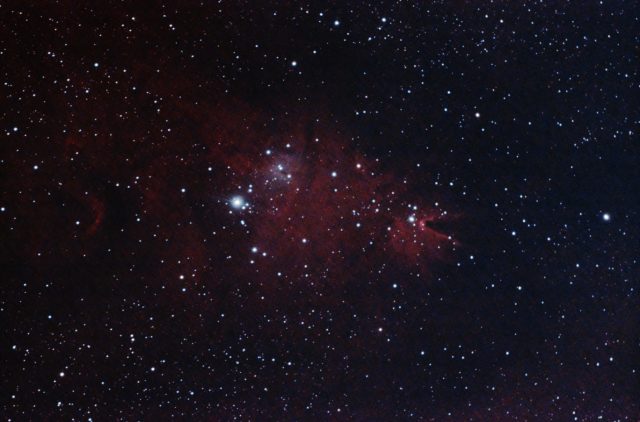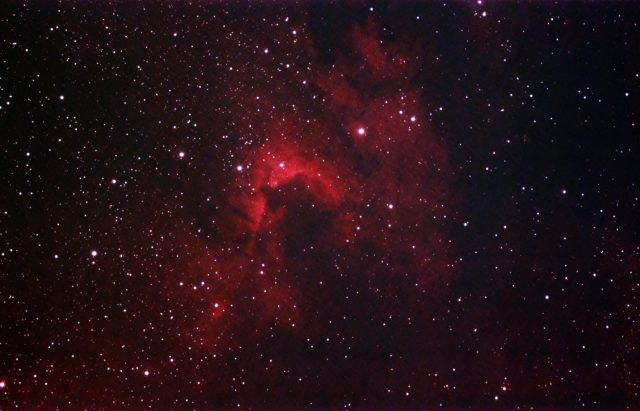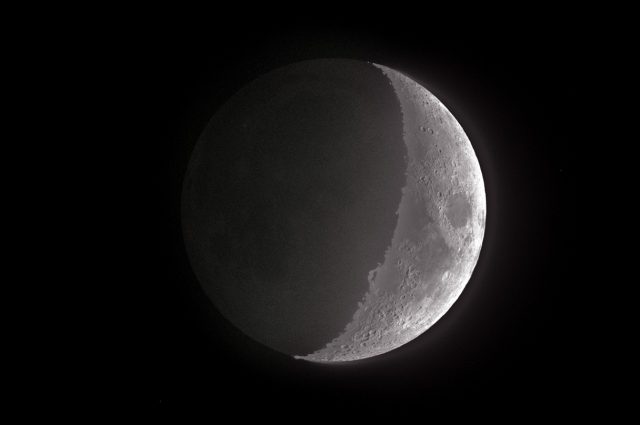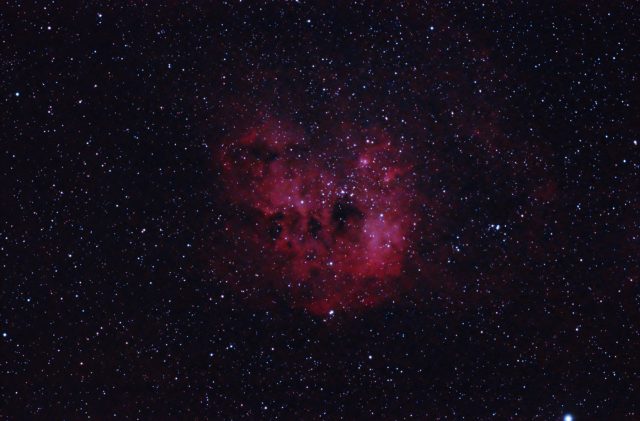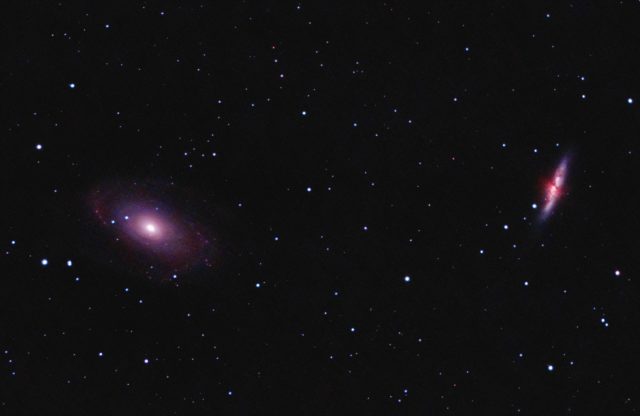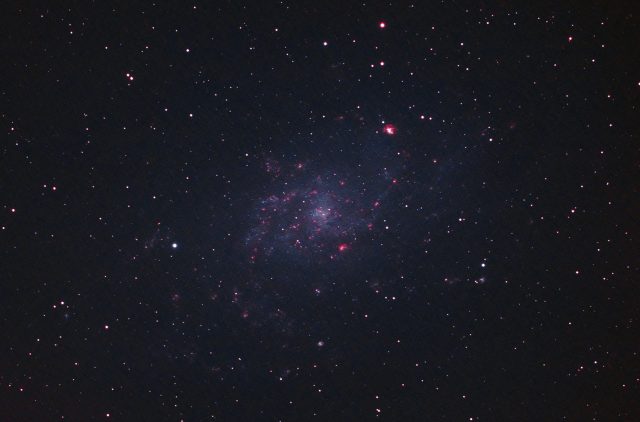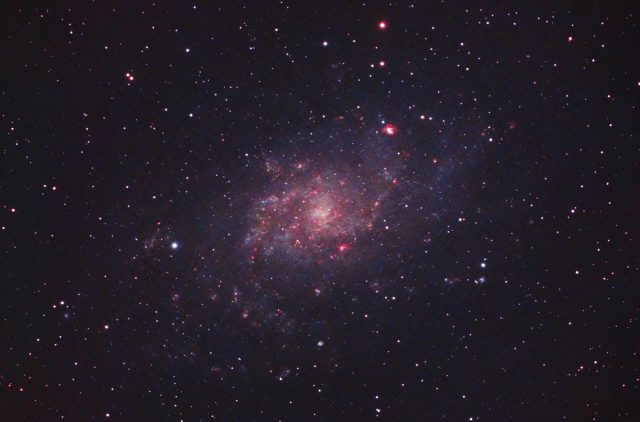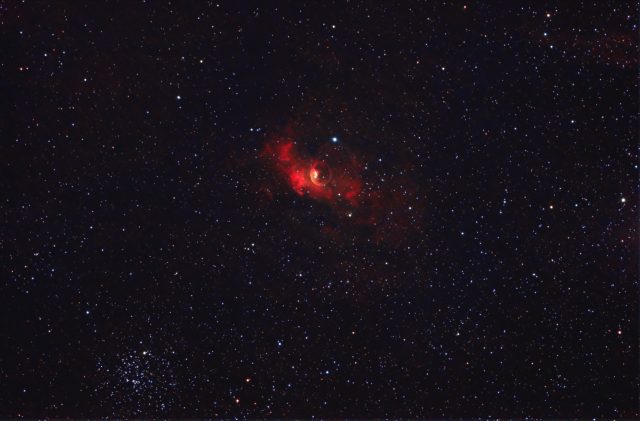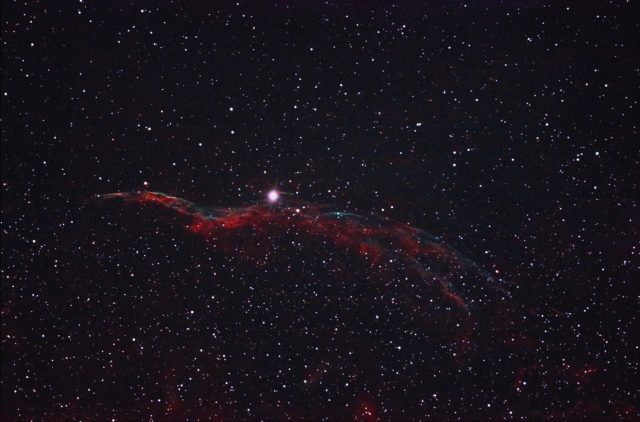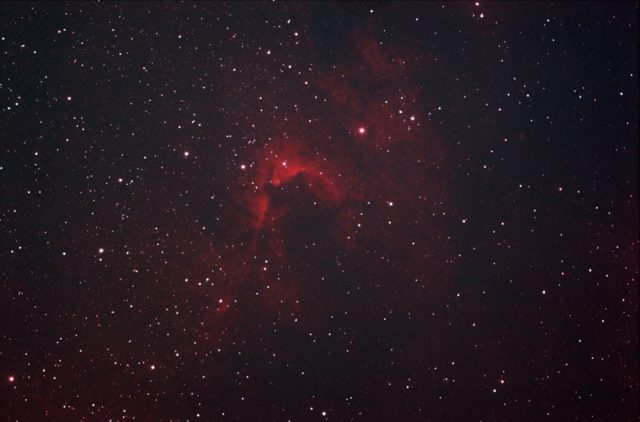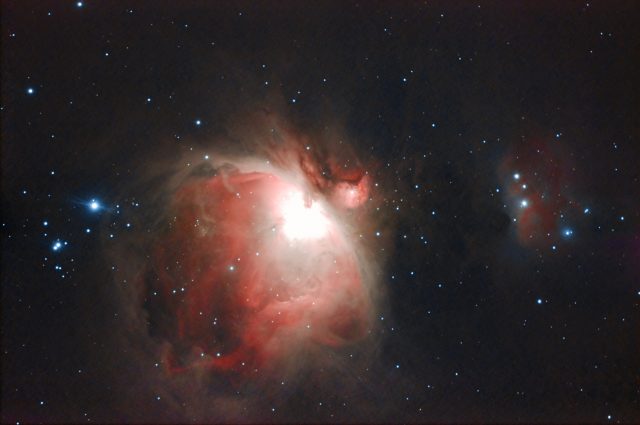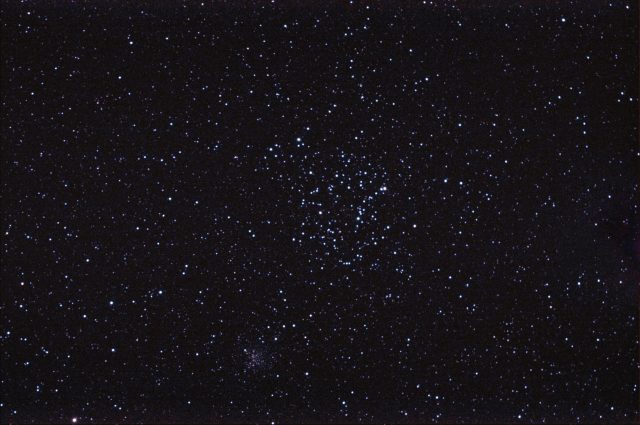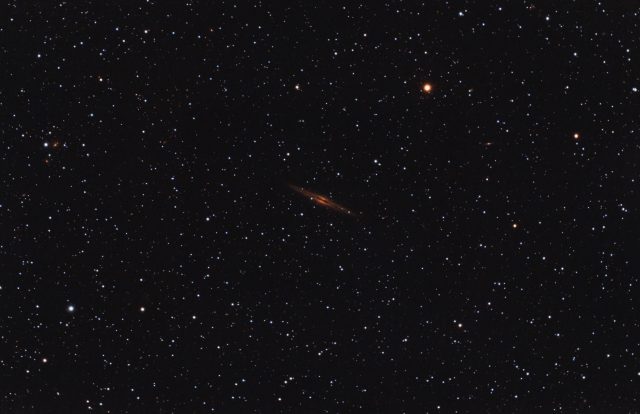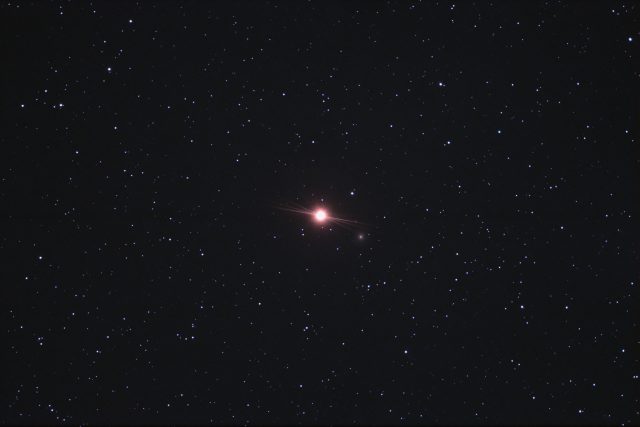
Finally, the weather cleared after several weeks of clouds. This is typical for December down here in Cajun Country. With the clear conditions, I got a chance to try out a new UHC-S filter I purchased from Baader Planetarium. It replaces the cheap generic UHC filter I got from Amazon. Still shooting from the big city these days in Bortle 8 Red zone is a good test of these filters to see how much LP gets in and how well galaxies and nebulae show up.
I found out the L-eNhance filter doesn’t do much for galaxies unless they have lots of H-alpha regions. An hour worth of subs I took at the beginning of the month of the Leo Trio barely had anything worth keeping, so I only blended about 25% of it in to this image. The 450×30 sec Live Stack with dithering turned on I acquired in SharpCap 3.2 and the UHC-S filter was good enough to stand on its own.
Minimal post processing was done for this one, which is always nice after staying up all night imaging. lol 🙂
Before I shot the Leo Trio, I did a “blue test” on the Pleiades. I have 16 minutes worth of data and it shows how well this filter does with broad band and non-h-alpha objects. Check it out:
